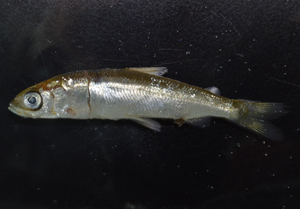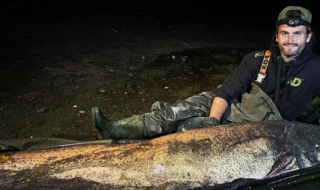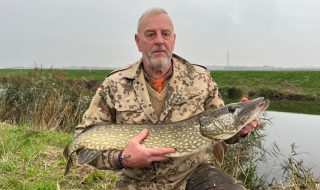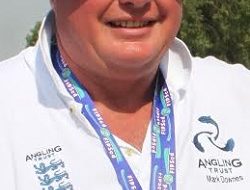The vendace – Britain’s rarest freshwater fish and one that was thought to be extinct in the UK apart from in two waters – has re-emerged in a study of Bassenthwaite Lake.
A ‘fish community study’ run through the Centre for Ecology & Hydrology found a single specimen. The small size of the fish, only 54mm in length, makes it likely to be what’s known as an ‘underyearling’, which would have hatched during the spring of this year. It’s an indication of a probable small breeding population of vendace in the venue over a decade after they were declared to be locally extinct.
Dr Ian Winfield from the Centre for Ecology & Hydrology (CEH), who led this autumn’s survey, said: “This finding of a single vendace individual is a very pleasant surprise and gives great encouragement to everyone involved in the restoration of Bassenthwaite Lake and its fantastic wildlife.”
The vendace is a relic of the Ice Age with only four native populations ever having been recorded in the UK – at two lochs in south-west Scotland and Bassenthwaite Lake and Derwent Water in north-west England.
The populations in Scotland became locally extinct many decades ago, probably as a result of local nutrient enrichment, and vendace were last recorded in Bassenthwaite Lake in 2001.
Until recently it was believed that only the Derwent Water population remained along with a refuge population in Loch Skeen in south-west Scotland, which was established using eggs from Bassenthwaite Lake in the early 2000s.
Dr Winfield and the scientific team have put forward three possible origins for the fish found this autumn. First, it is possible that vendace have actually survived in Bassenthwaite Lake for the last 12 years at very low abundance (below the limit of detection) and may now be increasing in abundance. Second, it is possible that the fish has arrived in Bassenthwaite Lake by moving down the River Derwent from the population in Derwent Water.
Third, it is possible that such downstream movement happened some time ago and the individual is the locally-spawned offspring of such colonisers.
The fish community of Bassenthwaite Lake has been monitored by the Centre for Ecology & Hydrology since 1995 in a collaborative project with the Environment Agency. Each year, the abundance and composition of the fish community is assessed using state-of-the-art hydroacoustics (echo sounding) combined with limited netting.
Dr Winfield added, “Continued monitoring of the fish community of Bassenthwaite Lake will help us to understand what has happened and to inform appropriate conservation actions.”






